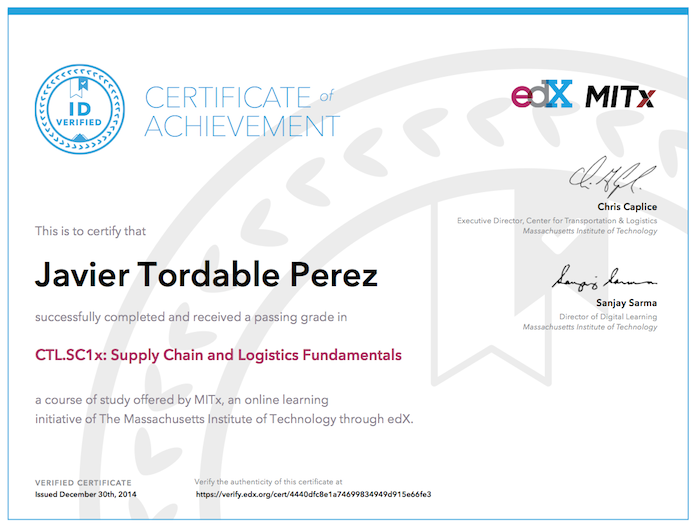Supply Chain
I recently switched jobs at Google. After two years working in Ads I decided that I needed a change, and I joined the Supply Chain team. Five months later I can start to recap my experience.
So far it’s been really interesting. I’ve learned a lot over the past few months about Supply Chain, Logistics and other “traditional business areas”. When I began my Software Engineering career I would not have expected to learn about hubs and spokes, truckloads and less than truckloads, capitalization of assets, warehouse management systems and factory capacity planning. Today I’m going to talk a little bit about Supply Chain. Obviously none of this is Google-specific, but I hope it will be interesting. Much of this content is taken from Essentials of Supply Chain Management by Michael Hugos.
As well as from an edX course in Supply Chain that I completed recently. Suply Chain and Logistics Fundamentals by Chris Caplice. Here is my diploma!

Supply Chain is the network of business activities and processes involved in fulfilling a customer request, including procurement, transformation, and distribution of materials. And Supply Chain Management is the design and deployment of these networks. As a subset of Supply Chain Management, Logistics typically refers to activities within a single organization (Supply Chain can involve multiple companies), and mostly related to physical transportation of materials.
The end goal of Supply Chain Management is to maximize the amount of product delivered to customers while keeping costs as low as possible. But a well designed supply chain not only saves money, it also enables delivering products to customers in ways which would not have been possible otherwise. Each supply chain is unique, but it’s interesting to consider these five major areas, as well as the challenges that come up in each area:
- Production: What to produce, how much, when and where? Including the master prouction schedule subject to capacities, load balancing and quality control
- Inventory: What should be stocked in each location, and at what stage of production. What are the optimal levels and reorder points?
- Location: Where to place each facility for production and storage?
- Transportation: How to move inventory from one location to another?
- Information: What metrics to collect and share? How to use this information to make decisions?
The key to designing a great supply chain, is to find the proper tradeoff between flexibility and efficiency, appropriate for the market and the products that the business creates and its overall strategy. For example, in the production area, a substantial amount of unused excess capacity allows adapting quickly to changes in customer demand. But it’s expensive to maintain. In the case of inventory, having a big quantity of raw product will allow production flexibility, but will also be expensive to hold. As far as locations go, the most flexible locations are next to the end customers, but the most efficient are centralized and leverage economies of scale. In transportation we have decisions between fast but expensive modes versus slower and cheaper modes. And finally, with regards to information, accurate and complete information is more expensive to obtain than less complete information.
